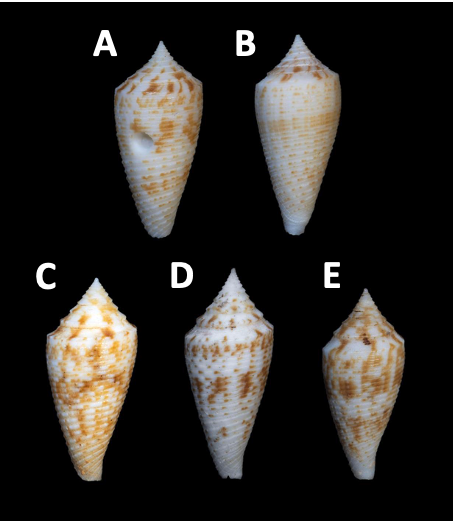VOLUME 15 NUMBER 2 (July to December 2022)

SciEnggJ. 2022 15 (2) 079-087
available online: September 20, 2022
*Corresponding author
Email Address: samuel.espino@utah.edu
Date received: June 26, 2022
Date revised: August 29, 2022
Date accepted: September 05, 2022
ARTICLE
Analysis of cone snail species in the Phasmoconus lineage collected off Aurora, Eastern Luzon
Baldomero M. Olivera and Samuel S. Espino*
School of Biological Sciences, University of Utah, Salt Lake City,
UT 84112, USA
UT 84112, USA
The marine biodiversity of the Philippines is rich, vast and distinctive making it challenging to design an effective program for systematic scientific investigation. Most studies carried out are either broad surveys, or at the other extreme, highly reductionist studies. The focus of the present study is the specimens in the Superfamily Conoidea collected by a collection trip organized by The Museum of Natural History, Paris (the “Aurora 2007 expedition”). These specimens comprise a biodiverse lineage of cone snails; we focus on the subgenus Phasmoconus, (genus Conus). There were 10 different morphospecies recovered at the site; 5 were previously reported from the Philippines. Two specimens tentatively assigned to Phasmoconus are species not previously documented from the Philippine archipelago (Conus c.f. gabryae and Conus c.f. grangeri). Two of the forms collected: Conus glorialita and Conus tayabasensis, could not be assigned to any previously named taxa in the literature and appear to be undescribed; these new species are described in this article. The most remarkable discovery was Conus (Phasmoconus) balerensis, a new species collected during this expedition. Over 200 specimens of this species were collected; this was by far the most abundant Conus species occurring over a wide stratigraphic range. In contrast most Phasmoconus specimens collected had a fairly narrow depth distribution. At present, Conus balerensis has only been found in deep waters off Aurora. The large fraction of unnamed species and new locality records for Phasmoconus recovered during the expedition demonstrate that even for well-studied lineages, a significant fraction of Philippine marine biodiversity remains poorly defined.
© 2025 SciEnggJ
Philippine-American Academy of Science and Engineering